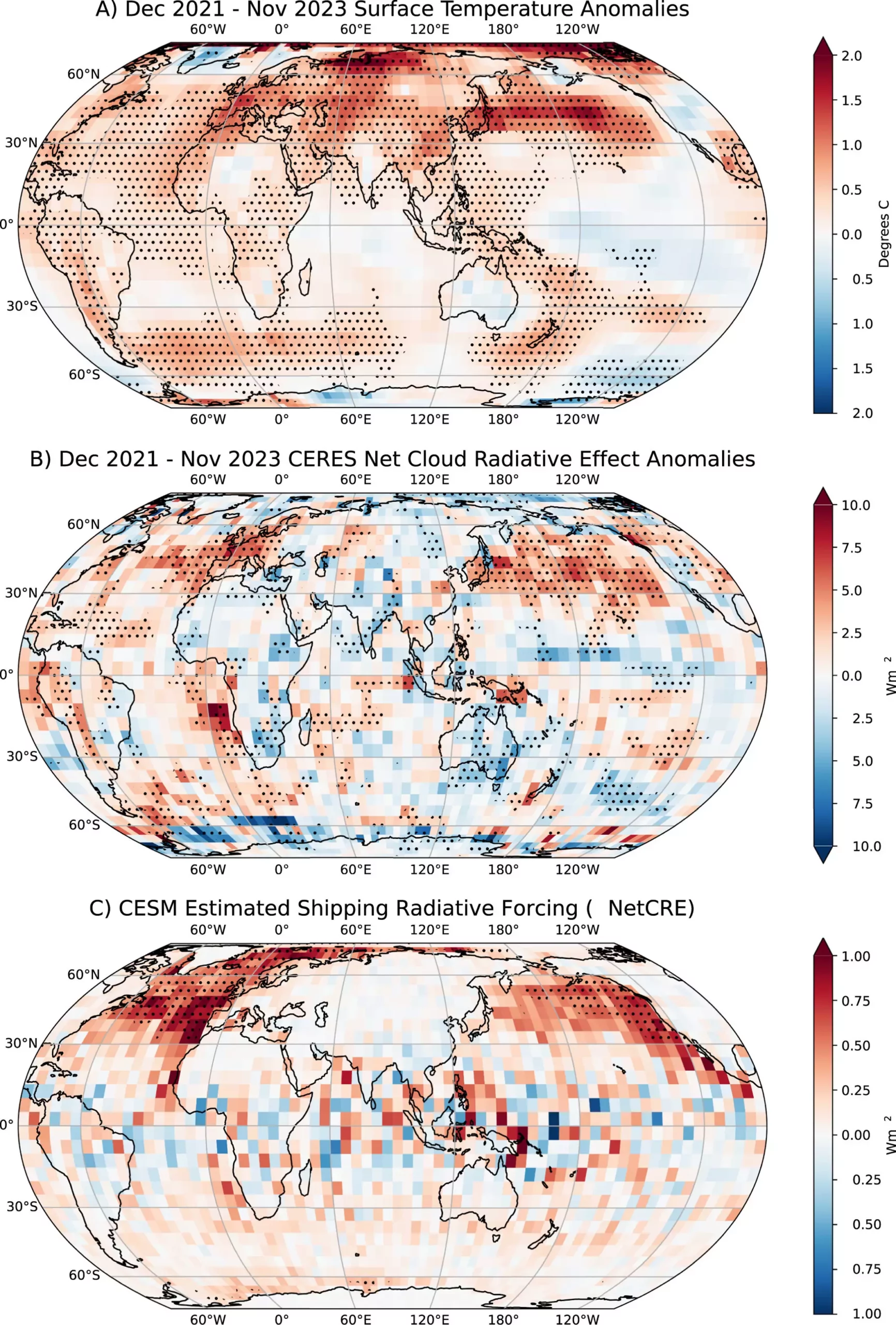In 2023, scientific discourse was dominated by alarming findings on climate change, with last year officially recognized as the warmest on record. A pivotal study published by researchers from the Department of Energy’s Pacific Northwest National Laboratory (PNNL) in the journal Geophysical Research Letters has unveiled an intriguing relationship between shipping industry emissions and recent temperature escalations. Remarkably, the analysis indicates that nearly 20% of the thermal increase can be traced back to a significant regulatory shift targeting sulfur emissions from maritime operations. This revelation urges a reevaluation of how seemingly positive environmental regulations may inadvertently contribute to global warming.
With regulations enforced in 2020 by the International Maritime Organization, an 80% reduction in sulfur content of global shipping fuel was accomplished. Initially, this aimed to enhance air quality around ports, aiming to mitigate the health hazards associated with sulfur dioxide emissions. However, such drastic reductions spawned unforeseen climatic repercussions. The downturn in sulfur emissions led to a reduction in atmospheric sulfur aerosols, which historically served as a cooling agent by facilitating cloud formation. These aerosols, by reflecting sunlight, acted as a counterbalance to the greenhouse gas effect, thereby implicating them in a complex climate feedback loop.
Ships releasing fuel into the atmosphere produce not just harmful sulfur dioxide, but a series of chemical compounds that promote the creation of sulfur aerosols. In previous scenarios, these aerosols formed ship tracks—linear cloud formations that could cover significant stretches of ocean, creating a cooling effect. A significant finding in the PNNL study involved analyzing over a million satellite images through machine learning techniques, revealing a stark 25-50% reduction in these visible tracks. This reduction in aerosol particles correlatively matched an increase in warming, reaffirming the hypothesis that decreased sulfates can lead to higher surface temperatures.
The warming attributed to changes in sulfur emissions is only a piece of a much larger puzzle. The authors of the study recognized an array of factors that govern global temperature fluctuations, such as oscillating climate patterns and varying levels of greenhouse gas concentrations. While the study emphasizes that the reduction of sulfur emissions has heightened warming, it does not claim this was the sole driver. The profound impact of greenhouse gases requires substantive consideration as they complicate predictions of climate evolution, often overshadowing the transient effects of sulfur aerosols.
The study indicates a continuing trend of warming is anticipated as the climatic response unfolds. However, the relationship between aerosol concentrations and temperature shifts introduces a significant level of uncertainty in climate projections. In his analysis, Earth scientist Andrew Gettelman noted that “cleaning up air quality faster than limiting greenhouse gas emissions may be accelerating climate change,” implying an urgent need to recognize the implications of regulatory measures beyond their immediate health benefits. The transient nature of aerosols presents a formidable challenge within climate modeling, presenting unknown dynamics as emissions decrease.
To navigate the complex interplay between sulfur emissions and climate dynamics, researchers advocate for better access to ship movement and emissions data. Comprehensive models that encapsulate potential oceanic feedbacks will be essential for refining predictions surrounding the climate impact of such emissions reductions. As the study illustrates, real-world temperature fluctuations are not merely products of isolated changes but are influenced by a variety of interlinked factors, many of which remain inadequately understood.
While environmental regulations on sulfur emissions from ships aim to enhance air quality, unintended consequences on climate patterns must be artfully reconciled. Such regulations may lead to rapid changes in temperature dynamics, particularly in the northern hemisphere. As we move forward, meticulous attention must be paid not only to emissions reductions but also to comprehensive monitoring and modeling that captures the complexity of atmospheric interactions. The ongoing evolution of climate science necessitates an integrated approach, wherein improvements in air quality do not inadvertently exacerbate global warming trends.

